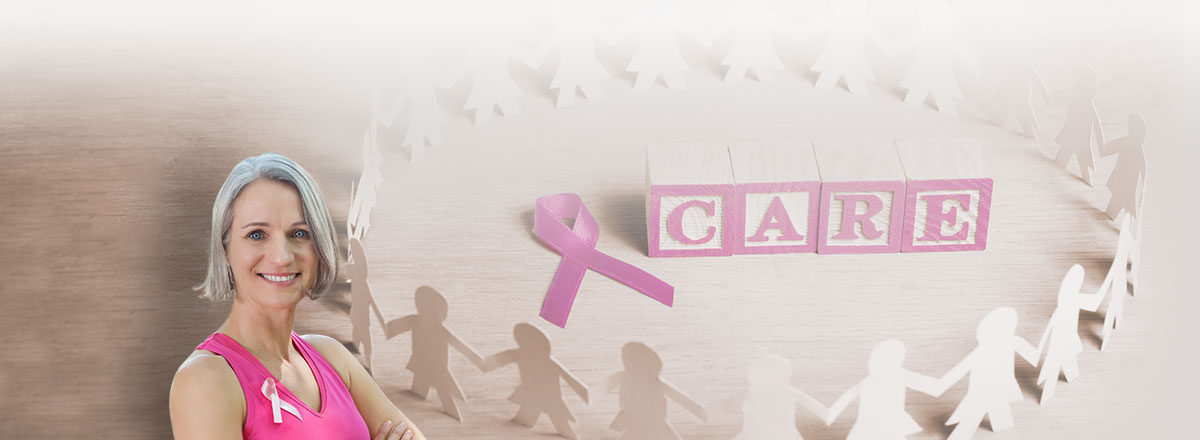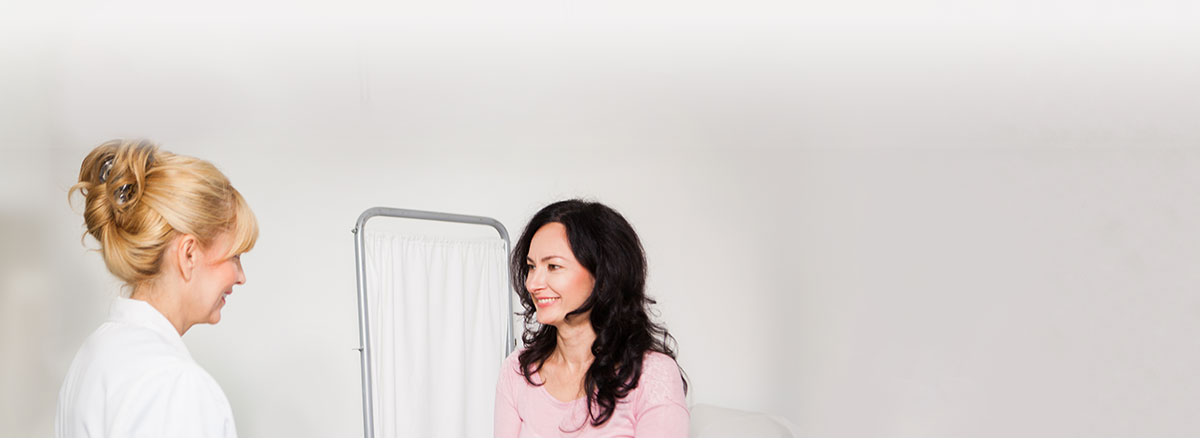Breast Lumps
What to do if I Find a Lump in My Breast or Notice any Unusual Changes?
Most breast lumps will turn out to be benign but they should all be investigated.
- See your GP - Your GP will ask you some questions about the lump, any symptoms and family history and risk factors for breast cancer.
- Imaging - mammogram/ultrasound- this will tell you a bit more about the lump- is it fluid-filled or solid or is it normal breast tissue? does it look benign or worrying?
- Biopsy - often a biopsy is recommended to give a definitive diagnosis of your lump. This can sometimes be a fine needle aspirate where a few cells are taken but more commonly a core biopsy where a tiny piece of the lump is taken. These pieces of tissue are sent to a pathology laboratory where a pathologist can tell you what the lump is.
- Consultation - back to the GP for the results of the tests - if necessary, your GP will send you to one of our breast specialists for an opinion and management of the lump.
What Actually Are Breast Lumps and Breast Changes?
The majority of breast lumps are benign in nature, however, they should always be investigated.
Types of Benign Breast Conditions
Benign breast problems present in different ways and types; but in general, they are classified according to the predominant symptom as:
- Breast Lumps
- Breast Pain
- Nipple problems
- Infection of the Breast or Mastitis
Causes of Breast Lumps
Often the normal breast tissue can appear to form a lump. This is sometimes called ‘breast nodularity’. These areas of localised nodularity are common causes of a benign breast lump.
Localized nodularity can just be a normal change with your menstrual cycle; most women who have been previously diagnosed with "fibrocystic disease" may have had nodular breast tissue.
Causes of benign breast lumps can be:
- Fibroadenomas
- Cysts
- Hamartomas
- Lipomas
- Mastitis and Breast Abscesses
- Breast bruising and trauma (often termed ‘Fat Necrosis’)
About Fibroadenomas/Hamartomas
The terms are commonly interchangeable, Fibroadenomas and Hamartomas are harmless lumps of glandular and fibrous tissue and often have a very specific feel to a breast surgeon together with a very particular look on ultrasound. Fibroadenomas do not increase the risk of breast cancer.
Fibroadenomas may vary in size from a few millimetres to five or more centimetres in diameter. Most palpable fibroadenomas are of 1-3 cm in size and are called simple fibroadenomas and some can grow to more than 5 cm and are called giant fibroadenomas. Sometimes there can be many fibroadenomas in one breast.
How Common are Fibroadenomas?
About one in six (15%) women have fibroadenoma at some time in their life. Fibroadenomas occupy 12% of all the symptomatic breast masses; most common in women aged 20 to 40 and with peak incidence in 21-25 year age group.
In women over the age of 50 years, fibroadenoma occurs in less than 5% of the population.
Causes of Fibroadenomas
Although the exact cause of fibroadenomas is unknown, the effect of hormonal changes during reproductive life and pregnancy are suggestive.
Fibroadenomas can be solitary or multiple, palpable or impalpable.
Diagnosis of Fibroadenomas
Triple Testing is a combination of
- clinical examination
- imaging, and
- biopsy
Imaging for Fibroadenomas
Fibroadenomas can be detectable as a lump by
- Palpation
- Mammogram
- Breast ultrasound
Any suspected fibroadenoma either palpable or impalpable that shows atypical features on clinical or imaging assessment requires pathological diagnosis by Core Biopsy.
Treatment of Breast Lumps and Fibroadenoma
After diagnosis, breast lumps and fibroadenomas can often be managed with clinical and imaging surveillance alone. Occasionally surgery is required to remove the lump.
It is entirely the woman's choice whether to have the fibroadenoma removed if it is stable, but most women will not go for removal unless the lump is large or symptomatic.
Young Women (<30 years)
Symmetrical and cyclical nodularity can be managed with proper clinical surveillance of around 2–3 months.
Further investigation performed if the woman feels that there is a definite change in lump her breasts.
Older Women (>30 years)
Asymmetric nodularity or thickening requires extensive investigation through mammography and ultrasound.
If there is a clinical concern about breast cancer in patients with localized nodularity; in such cases, fine needle biopsy or core biopsy should also be considered.
Larger fibroadenomas (>3–4 cm diameter), and the lesions with atypical features or those significantly increased in size should be considered for excision biopsy, regardless of patient age and triple testing results.
Breast Cysts
Women who get many cysts may ignore breast lumps and do not go for check-ups by their physician, which results in delayed diagnosis in case it is a sign of breast cancer. Therefore, it is essential to get every new breast lump examined immediately.
What Are Breast Cysts?
Cysts are fluid sacs in the breast tissue.
Cysts appear as lumps that are smooth, soft to firm, mobile, and sometimes tender and often of sudden onset.
Cysts are harmless.
Patients should be assured that a benign cyst does not significantly increase their risk of breast cancer.
Women who get many cysts may ignore breast lumps and do not go for check-ups by their physician, which results in delayed diagnosis in case it is a sign of breast cancer. Therefore, it is essential to get every new breast lump examined immediately.
Who Is Affected by Breast Cysts?
Breast Cysts are common in women in the age group of 35-50. They usually cease with menopause but are common in women taking Hormone Replacement Therapy (HRT).
Approximately 7% of women may have a palpable cyst at some point of their lives.
Diagnosis of Breast Cysts
Breast cysts can be impalpable, asymptomatic and are usually identified by an incidental finding on routine imaging.
On ultrasound, cysts appear as well-defined round or oval 'anechoic' (black) lesions.
Atypical cysts through asymptomatic may require aspiration under the guidance of ultrasound and a sample will be sent for cytological assessment.
Typical breast cysts are not cancerous, and cysts do not increase breast cancer risk. Asymptomatic cysts with typical features of a benign cyst do not require treatment.
Draining Breast Cysts
The cystic fluid can be drained using a fine needle. Cyst fluid can vary in colour and consistency. The fluid can be clear or coloured- yellow, green, orange, or black.
Treatment of Symptomatic Cysts
Women with symptomatic cysts (causing significant discomfort) can be considered for aspiration to provide symptomatic relief, either under clinical or ultrasound guidance.
A palpable lump that has the typical features of a simple cyst on ultrasound does not require aspiration to confirm the diagnosis.
Surgery is rarely recommended for treating cysts.
Breast Bruising and Trauma (often termed Fat Necrosis)
Fat necrosis occurs due to trauma (sudden injury) or a specific injury to the breast. Breasts are made up of lobules, ducts, glandular, fibrous, and fatty tissue.
The damaged area of breast tissue can lead to a lump formation known as fat necrosis. Necrosis refers to cell death. The damage to the fatty breast tissue commonly occurs following breast surgery, including breast reduction and breast reconstruction, or radiotherapy to the breast.
Most women diagnosed with fat necrosis have no history of any specific injury at all.
Fat necrosis appears like a firm painless lump, but some women may have tenderness or even pain. The skin around the lump may look red, bruised, or occasionally dimpled.
At times fat necrosis can cause the nipple to retract inwards. Although fat necrosis is benign, it can sometimes look like breast cancer. These lumps of breast tissue may appear as malignant breast tumours on mammograms and other imaging studies.
Therefore, for a proper diagnosis full triple assessment is required.
Fat necrosis often resolves on its own. If the lump does not disappear over time or increases in size, a small surgery may be recommended to remove the lump. Fat necrosis can be observed in women of any age. It is a benign breast condition and does not increase breast cancer risk.









